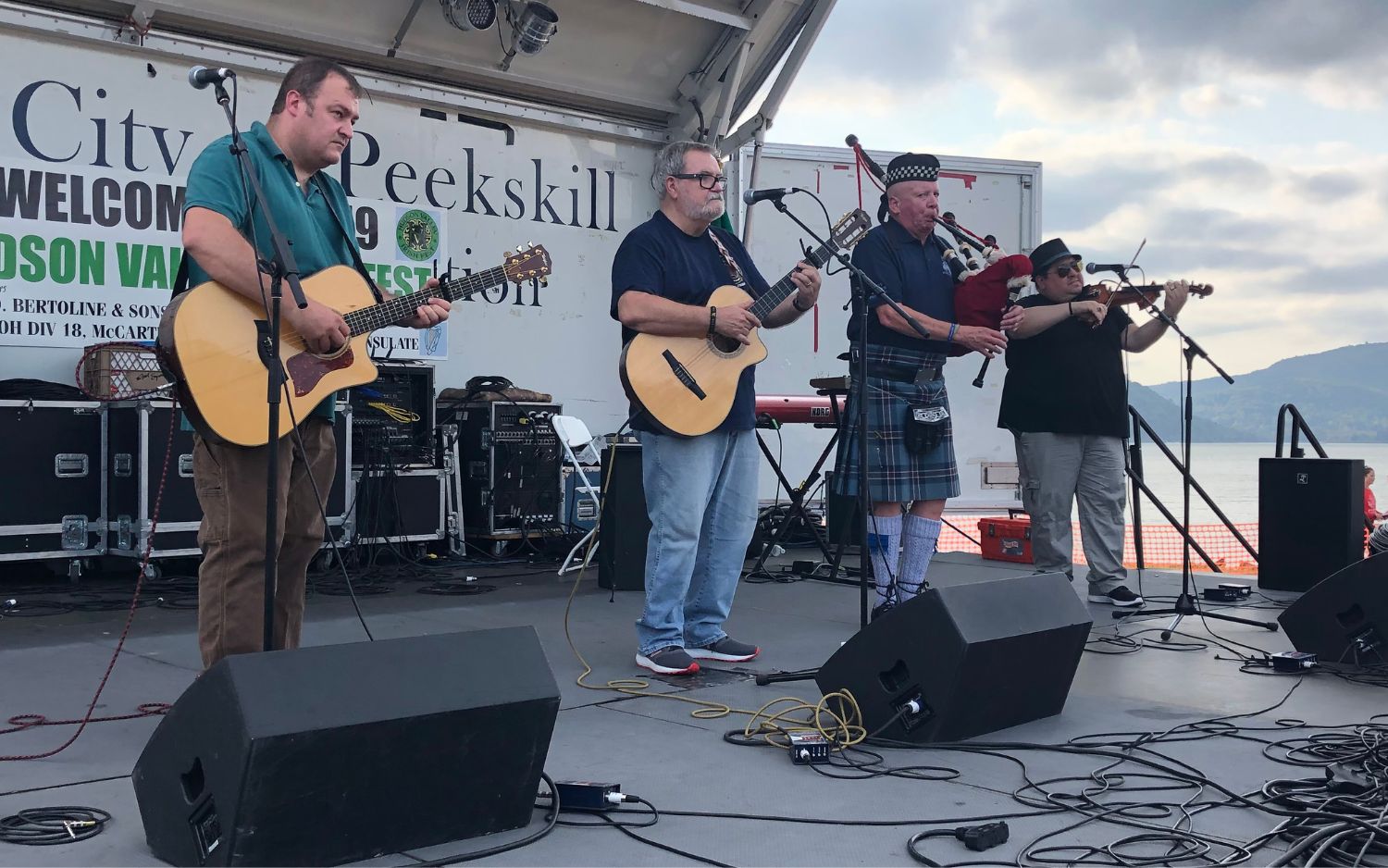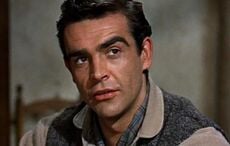Recommended
Roddy Doyle, bestselling Irish author of The Commitments, has completed his Last Roundup trilogy about IRA rebel Henry Smart with the epic and engrossing finale The Dead Republic. The series, which includes novels A Star Called Henry and Oh! Play That Thing and spans the 20th-century history of Ireland, traces the journey of the legendary character as he passes through identities, escapes and losses, encountering historical figures and events in Ireland and America on the way.
The third installment, which takes the reader up to the present day, opens on the aging Henry’s return to Ireland for the first time since his 1922 escape, one of his legs and his darling wife and children long lost. He is rescued on the verge of dying in the California desert by Henry Fonda and becomes a writer/IRA consultant collaborating with famed director John Ford in the making of The Quiet Man.
Henry’s memories are drawn out of him in interrogation-like sessions, from his work as an assassin to what songs his wife, legendary rebel Miss O’Shea whose role is taken up in Ford’s film by the illustrious Maureen O’Hara, used to sing. Smart and Ford’s relationship is complex and elegantly rendered, its contentiousness and intimacy eventually coming to a head. After parting ways with Hollywood, Henry becomes the caretaker at a boys’ school in a quiet village north of Dublin, but there’s more to the inner workings of the school than initially meets the eye. He begins gardening for an old woman named Missus O’Kelly, whose familiarity hints at a secret life long past.
As he grows old and older, Smart’s political involvement and rebel past remain an integral part of him; they will not die until he does. The theme at the heart of the novel is the idea of Irishness: who gets to decide what it means to be Irish, to love Ireland, and the bloody violence that follows the question.
– Kara Rota
($26.95 / 329 pages / Viking)
Fiction
I read Irish-American author Jonathan Dee’s new novel, The Privileges, in one sitting. Meaning to start a few pages before bed, I stayed up for hours, transfixed. The Privileges is a delectable work spanning twenty-some years in the lives of Adam and Cynthia Morey, a young, ambitious bride and groom described in their wedding toast as ‘a charmed couple.’ Jonathan Franzen called the book “a cunning, seductive novel about the people we thought we’d all agreed to hate.” This is accurate: the Moreys, from the beginning, are perfect to the point of alienation. They smugly taunt their parents’ awe of them and shrug off siblings, instead insulating their nuclear family with an exponentially growing layer of wealth and privilege. Their likeability is a feat of Dee’s artful prose.
Dee’s novel is neither an indictment nor a glorification, but a painstaking, bitingly clever and intimate depiction of a family for whom no goal is unattainable, no achievement great enough. Cynthia and Adam marry at twenty-two, eager to free themselves from the small lives their parents inhabit and create a world together where anything is possible. Adam’s business drive and charm catapult him effortlessly into his boss’s favor, but also keep him unsatisfied with climbing the corporate ladder even at an accelerated pace. He moves to insider trading, amassing wealth that becomes essentially meaningless to Cynthia as she struggles to find purpose, realizing employment will be unnecessary for the rest of her life. Their children April and Jonas, who grow to adulthood over the course of the book, try to carve out identities separate from their parents’ legacy and flirt dangerously with their own mortality in the process.
Dee is a gifted author of four previous novels and a staff writer for The New York Times Magazine. In a novel that smartly takes on complex issues of risk, reward, and happiness, his talent is irrefutable.
– Kara Rota
($25.00 / 272 pages / Random House)
Lisa Moore is a Canadian author of two short story collections, Degrees of Nakedness (1995) and Open (2002), which was nominated for the Giller Prize, and a previous novel, Alligator (2005) which won the 2006 Commonweath Writers’ Prize Best Book Award. Moore’s second novel, February, is set against the backdrop of a historical event in 1982, when the oil rig Ocean Ranger sunk in the Atlantic off the coast of Newfoundland. Eighty-four men aboard died.
Heroine Helen O’Mara, widowed in the shipwreck, is left alone to raise four small children and piece together a life absent of her beloved young husband Cal. In a nonlinear, cyclical chronology, Helen’s interior narrative sometimes painstakingly recreates the events surrounding the catastrophe that left her widowed, sometimes recalls from the perspective of age the recklessness of her and Cal’s ephemeral time together, and sometimes focuses on the present as Moore explores what it means to be a woman alone and aging, the simultaneous desire and evasion Helen feels about forging another romantic connection later in life.
Helen’s children, especially the eldest and the only boy, John, are each impacted differently by their father’s early death as we watch the effects unfurl into their adult lives. Moore is versed in the mundane, the infinitesimal details of a recognizably human, ordinary existence, which are uplifted by her startlingly visceral prose to be transcendent.
– Kara Rota
($14.95 / 320 pages/ Black Cat, an original paperback imprint of Grove/Atlantic, Inc.)
An Irish Country Girl is the fourth in the series by Patrick Taylor, and if the popularity of its predecessors is any indication, it is certainly not the last. For those who have not read An Irish Country Doctor or An Irish Country Village, do not despair: Taylor briefly explains the story of his main characters Doctors Laverty and O’Reilly and the picturesque village of Ballybucklebo in which they reside. An Irish Country Girl leaves Ballybucklebo for Cork to tell the story of Kinky Kincaid, the doctors’ housekeeper and beloved neighborhood fixture. Written as Kinky herself recalling her youth to a circle of eager children, the real treat of the novel is not so much its efficient prose but the focus on storytelling and myth as a part of Irish culture. The children of course are an ideal audience; their innocence allows Kinky to explain her life story and its more fantastic elements (as a child, Kinky discovers she can see bean sidhe or faeries, much to the delight of the imaginative children) plainly and honestly. For returning fans of Taylor, An Irish Country Girl is a lovingly told story of how Kinky Kincaid became the spitfire matriarch of the Ballybucklebo series. Taylor’s style, however, much like his characters, is very inclusive: his mixture of traditional recipes, Irish language and Celtic mythology invites everyone to sit around the fire at Kinky’s feet.
– Aliah O’Neill
($24.99 / 320 pages / Forge)
No stranger to the art of firmly captivating his readers, Alan Glynn delivers a complex thriller in Winterland. His first novel, The Dark Fields, is now being produced by Universal Pictures. Keeping with his cinematic style, Winterland paints a dark picture of contemporary Dublin complete with characters whose mystery seeps into the cracks of Dublin’s murkiest social constructs: deep into the gang culture and up through the political gears of the city.
Opening with the most heart-wrenching night in protagonist Gina’s life, the novel presents the bizarre and tragic coincidence of a son Noel Jr. murdered on the same night his father Noel Sr. dies in what appears to be a car accident. While most accept the coincidence as just that, Gina trails the story, unearthing disturbing clues that prove the events to be anything but happenstance. A page-turner complete with well-formed and dynamic characters, the novel unfolds a complex series of twists that leave the reader unsure who to root for at times. Glynn has succeeded in creating an exciting story of suspense and darkness, sure to keep readers on the edge of their seats guided by Glynn’s fearful tone.
– Tara Dougherty
($25.99 / 320 pages / Minotaur)
Irish Culture
Cork Rock by Mark McAvoy chronicles the Cork music scene as it grew from big bands in the 50s to rock and roll and punk acts in the 60s, 70s, and beyond. At the crux of this story is Rory Gallagher, who got his start touring small Cork clubs and eventually became a guitar god who played with Eric Clapton and almost became a member of the Rolling Stones. Gallagher’s blues-infused guitar licks were an inspiration to young musicians in Cork, who soon had the luxury of playing in a rising club scene.
Using interviews with Gallagher’s family members as well as local club owners and musicians, McAvoy vividly describes the growth and transformation of a music scene that both mirrored the trends of the time and produced a unique sound.
McAvoy devotes the latter half of his book to the birth of punk in Cork, a response to the psychedelic rock that dominated the 60s and early 70s. McAvoy focuses on bands such as Microdisney and Five Go Down to the Sea, but he also gives due to local legends like Sultans of Ping, to produce a comprehensive look at Cork’s musical history.
While Cork Rock is best read by diehard fans of these bands, anyone with a love of rock or punk music from this era will enjoy the first-hand accounts that McAvoy mines from the musicians and locals.
– Aliah O’Neill
($27.95 / 256 pages / Mercier Press & Dufour Editions)
With the World Irish Dancing Championships fast approaching, Kathleen Flanagan’s Steps in Time: History of Irish Dance in Chicago allows the reader to follow the journey of a small cultural tradition into an organized phenomenon sport. Her focus is on the development of dance in the city of Chicago from its early immigrant roots to the worldwide success of Chicago native Michael Flatley.
Flanagan lays out the early stages of formal Irish communities in Chicago through clubs. From these clubs emerged Irish dancing schools. Soon competitions were more regulated and organization entered the scene. Flanagan shows the premier dancers of their day and details the rising prestige of certain schools. With the introduction of the Irish Dancing Teachers Commission of America, dance extended beyond the Irish communities in cities like Chicago. Flanagan also explores the Riverdance phenomenon and its effects on the sport. The short history is illustrated with a wealth of old photographs that demonstrate the development of costume and add to the pleasure of the book.
– Tara Dougherty
($24.95 / 174 pages / University of Wisconsin Press)
Like many children, Reneé Gatz and her sisters often responded to their parents’ advice with rolling eyes. It wasn’t until years later that Gatz found herself repeating the familiar verbal expressions of her youth to friends, who suggested that she write them down. Realizing the impact her parents’ maxims had on her, Gatz has compiled their sayings into Wise Words & Witty Expressions. She combines well-known adages with humorous retorts that will remind readers of their own family expressions and provide new ones to return to and live by. The author largely credits her Irish Catholic mother, who learned many of her oft-used expressions from her own mother, an Irish immigrant who came to the U.S. alone at the age of 18.
With its cover photo of the Irish coast, the book is a nod to Irish wisdom and humor: one of Gatz’s favorite sayings is “The Irish have a way of telling you to go to hell so that you look forward to the trip,” meaning “No need to be nasty. If you are creative enough, you can shake off an annoying person.” With sections devoted to motherhood, love, life’s challenges, and sarcasm, readers will carry wisdom and wit through all of life’s situations.
– Aliah O’Neill
($14.95 / 122 pages / Woodpecker Press)




Comments